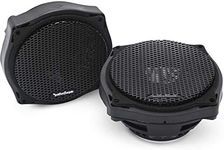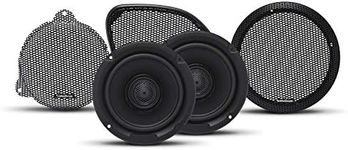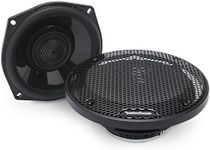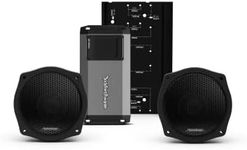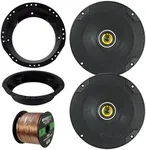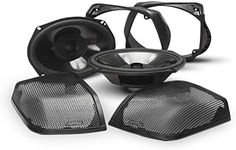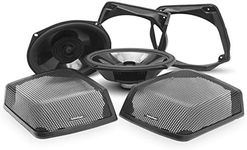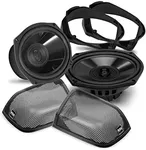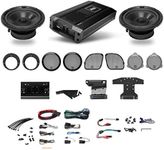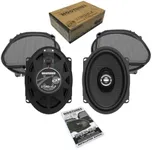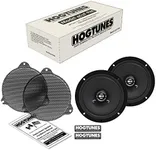Buying Guide for the Best Harley Speakers
Choosing the right speakers for your Harley-Davidson motorcycle can make a huge difference in your riding experience. Good speakers let you enjoy your favorite music or hear navigation instructions clearly, even at highway speeds. When shopping for Harley speakers, it's important to consider how they will perform in outdoor, noisy environments and how well they fit your bike. Understanding the key specifications will help you find speakers that match your listening preferences and riding style.Power Handling (Watts)Power handling tells you how much power (measured in watts) a speaker can handle from your audio system without getting damaged. This is important because if your speakers can't handle the power your stereo puts out, they might distort or even break. Power handling is usually given as RMS (continuous power) and peak (maximum short burst). For most riders, matching the RMS rating of the speakers to the output of your motorcycle's audio system is a good approach. If you ride at high speeds or want very loud music, look for speakers with higher power handling. For casual listening at lower volumes, lower power handling is sufficient.
Speaker SizeSpeaker size refers to the diameter of the speaker cone, usually measured in inches. Common sizes for Harley speakers are 4, 5.25, 6.5, and 6x9 inches. Larger speakers can generally produce deeper bass and louder sound, but they may not fit in all locations on your bike. It's important to check what size your Harley can accommodate—often, the fairing or saddlebag has a specific size limit. If you want more bass and volume, go for the largest size that fits your bike. If you prefer a simple upgrade or have limited space, smaller speakers can still offer a noticeable improvement over stock.
SensitivitySensitivity measures how efficiently a speaker converts power into sound, usually given in decibels (dB). Higher sensitivity means the speaker will play louder with less power, which is useful if your audio system isn't very powerful. If you have a stock or low-powered stereo, look for speakers with higher sensitivity (above 90 dB). If you have a powerful aftermarket amplifier, sensitivity is less critical, and you can focus more on other specs.
Weather ResistanceWeather resistance indicates how well the speakers can handle exposure to rain, sun, dust, and vibration. Since Harley speakers are exposed to the elements, this is a crucial feature. Look for terms like 'waterproof,' 'marine-grade,' or 'weather-resistant' in the product description. If you ride in all weather conditions or park your bike outdoors, prioritize highly weather-resistant speakers. If you mostly ride in good weather and store your bike indoors, you have a bit more flexibility.
Mounting CompatibilityMounting compatibility refers to how easily the speakers will fit into your Harley's existing speaker locations, such as the fairing, saddlebags, or tour pack. Some speakers are designed specifically for certain Harley models, while others are more universal. It's important to check the mounting depth and shape to ensure a proper fit. If you want a straightforward installation, look for speakers labeled as 'direct fit' for your bike. If you're comfortable with modifications, you can consider a wider range of options.
Impedance (Ohms)Impedance, measured in ohms, is a measure of electrical resistance. Most motorcycle speakers are 2 or 4 ohms. Matching the impedance of your speakers to your audio system ensures you get the best performance and avoid damaging your equipment. If your stereo is designed for 4-ohm speakers, use 4-ohm speakers; if it's for 2-ohm, use 2-ohm. Check your audio system's manual to see what it supports.
